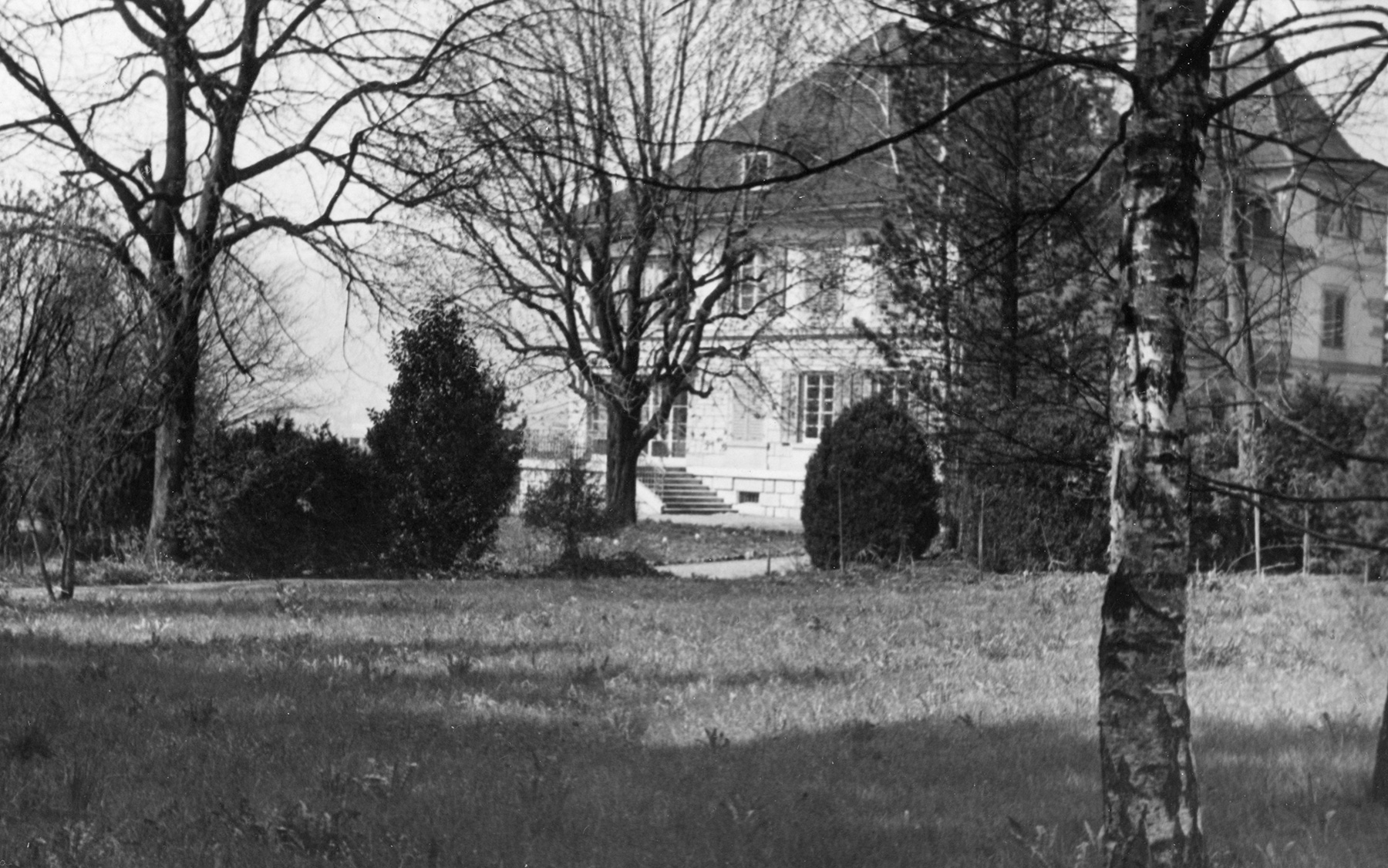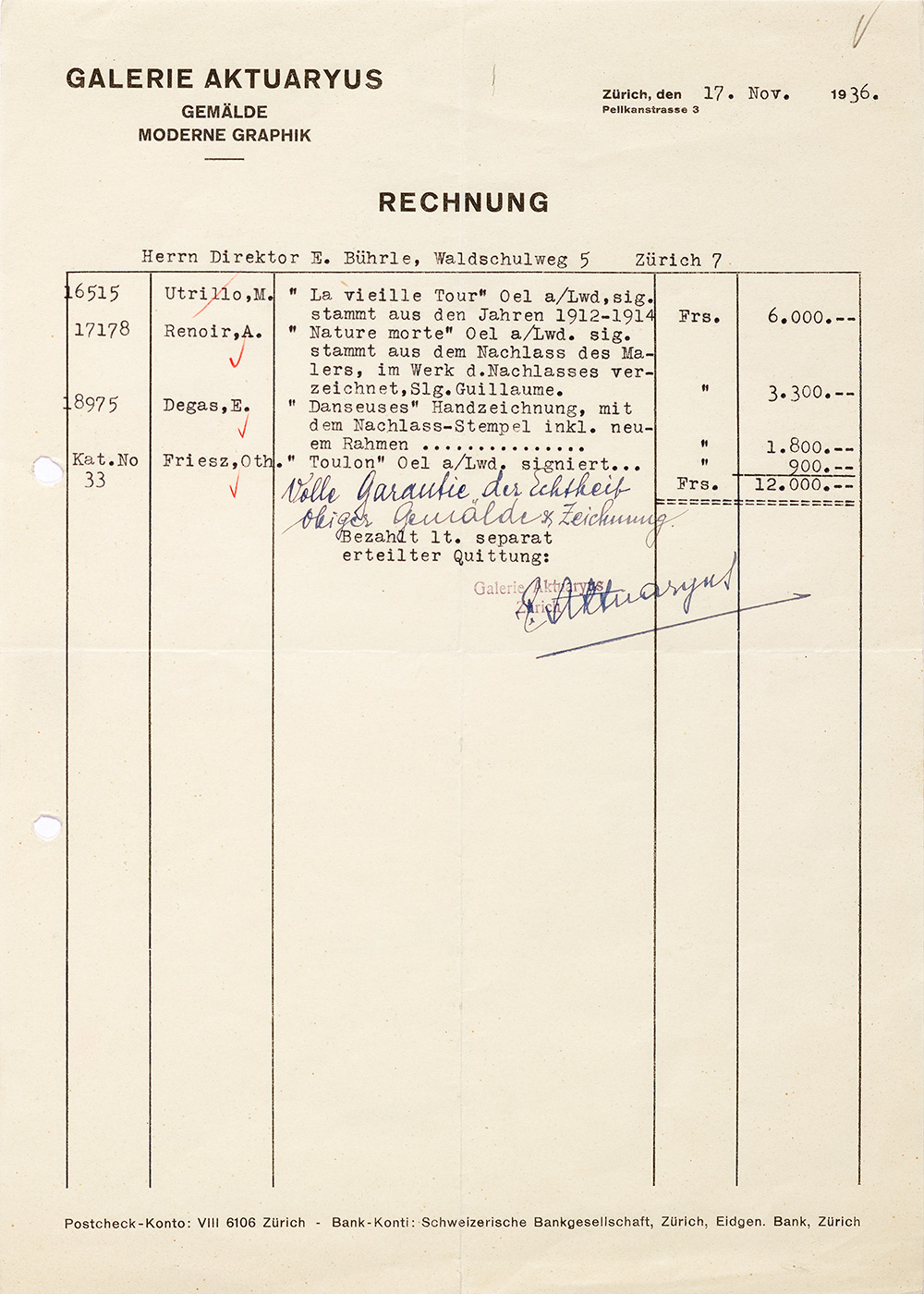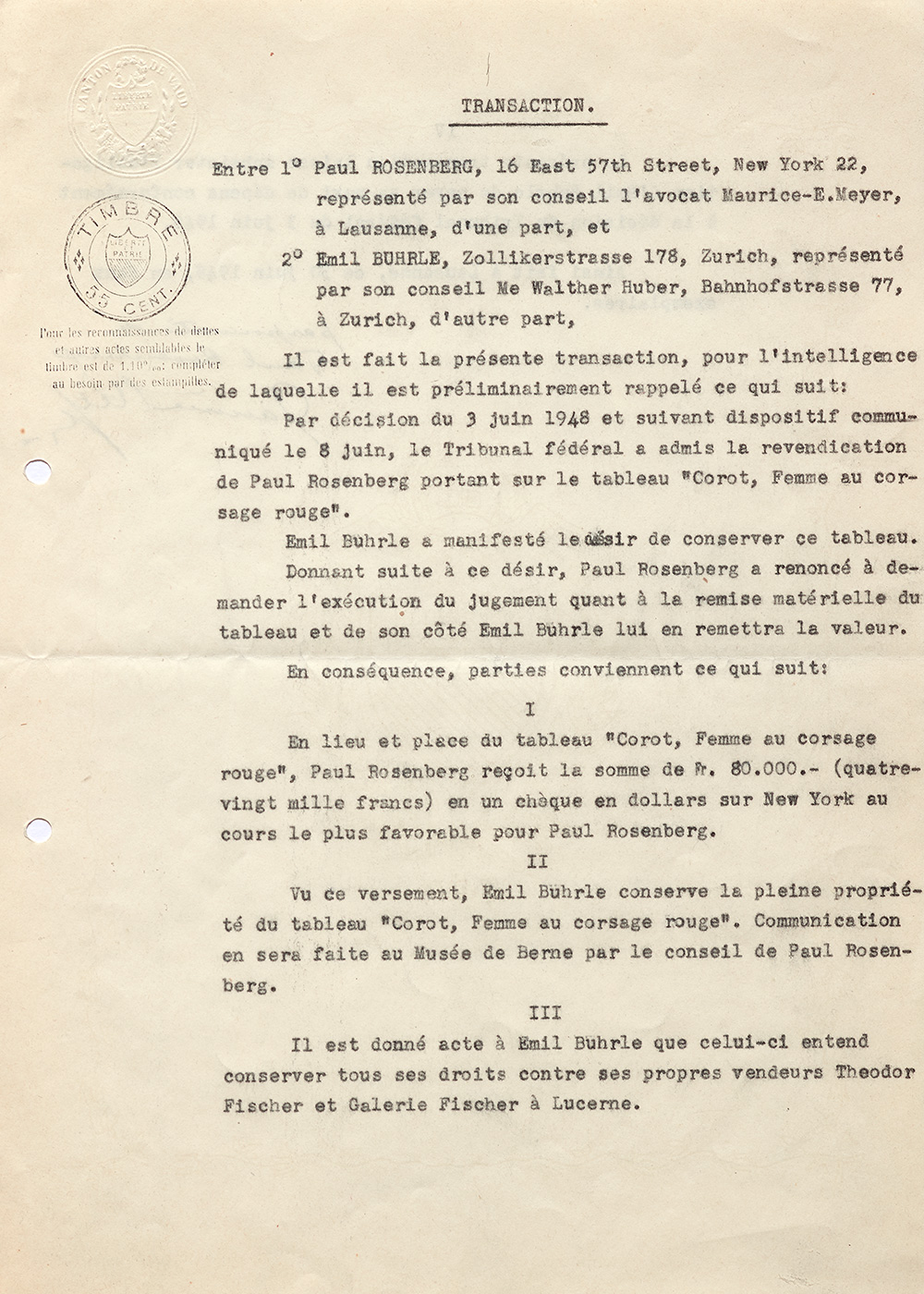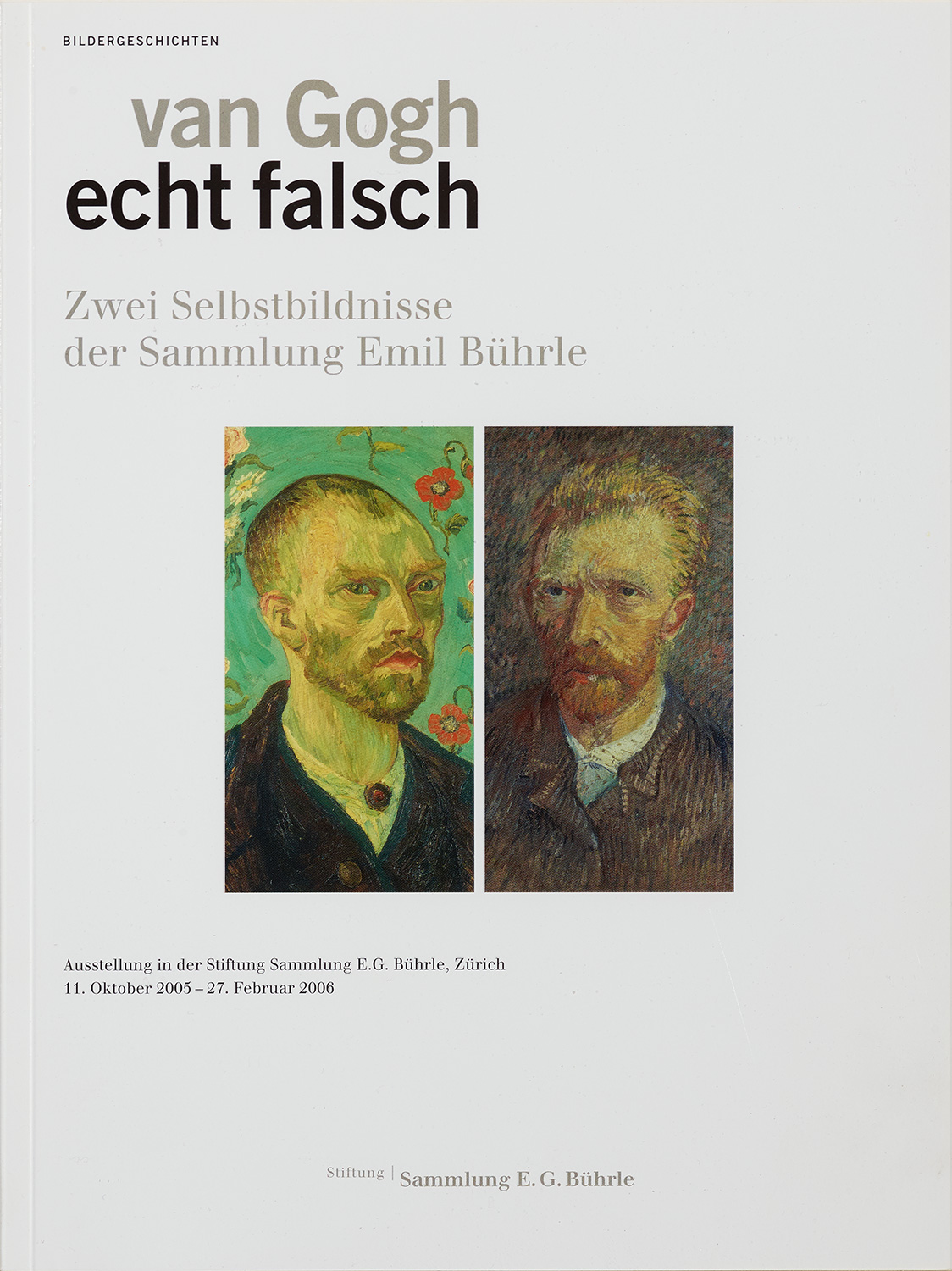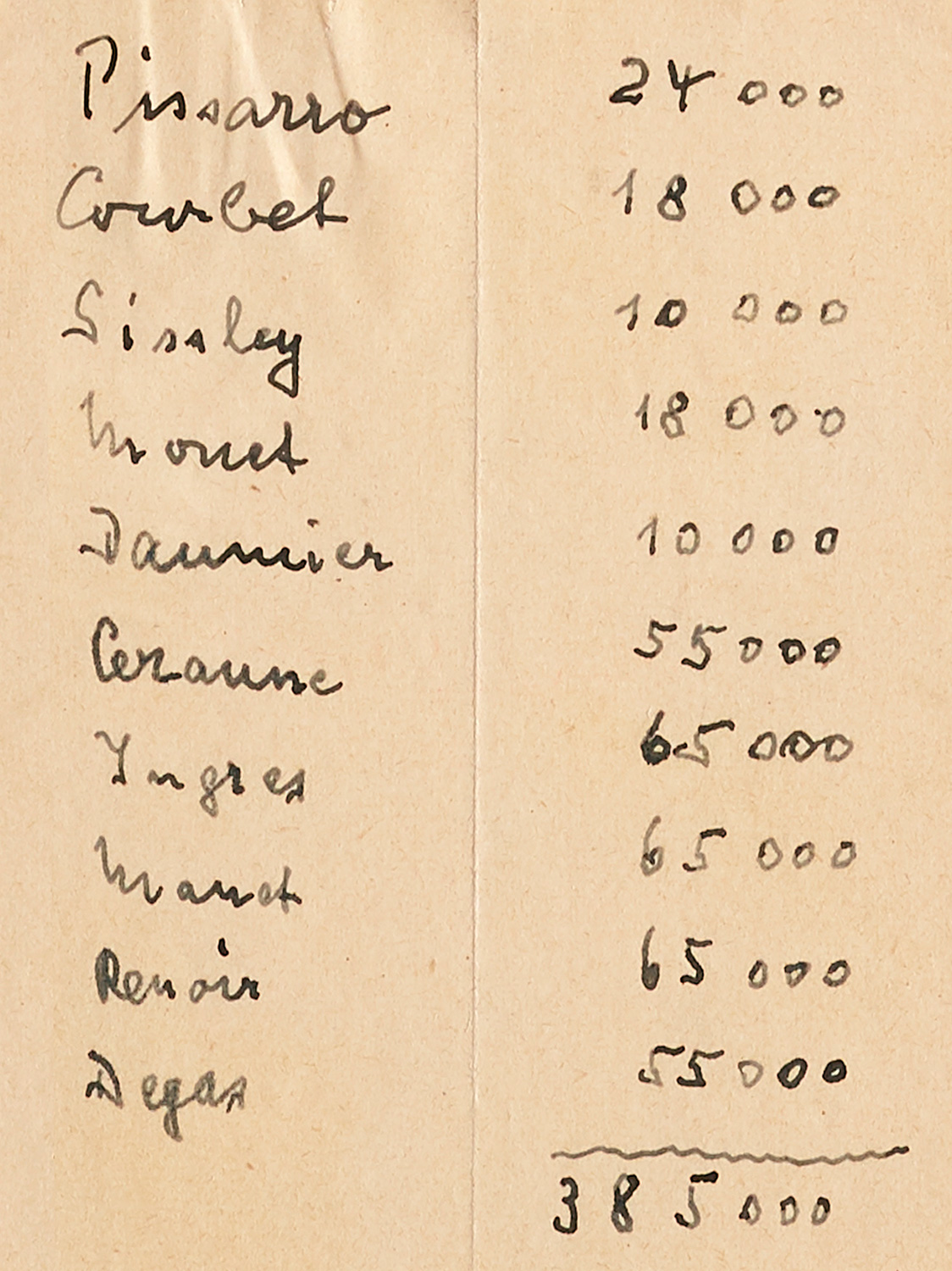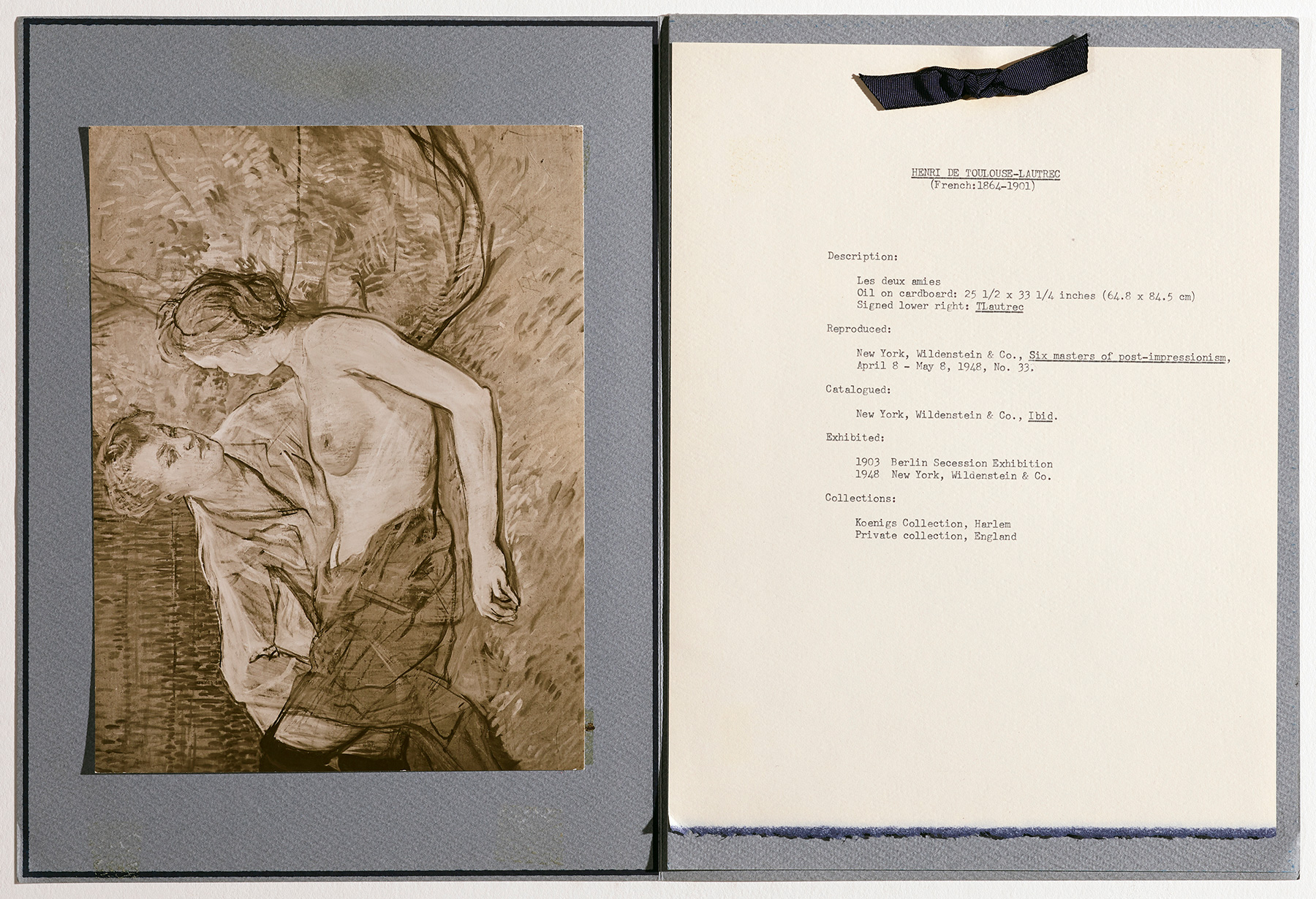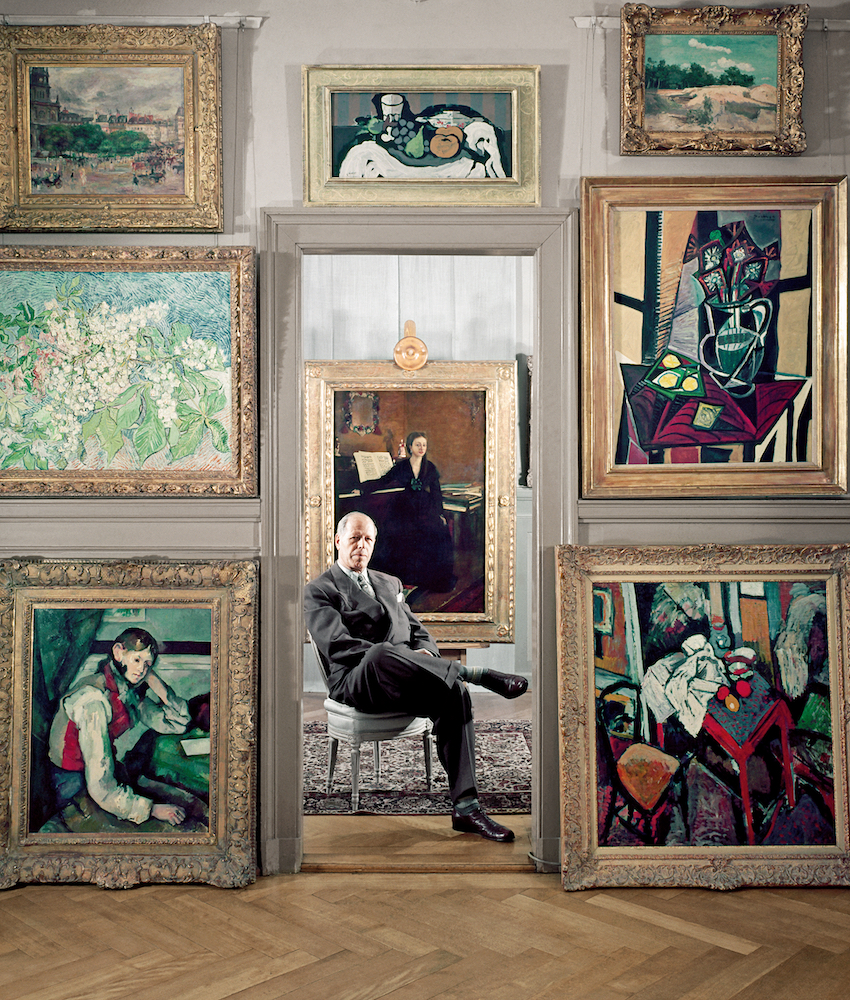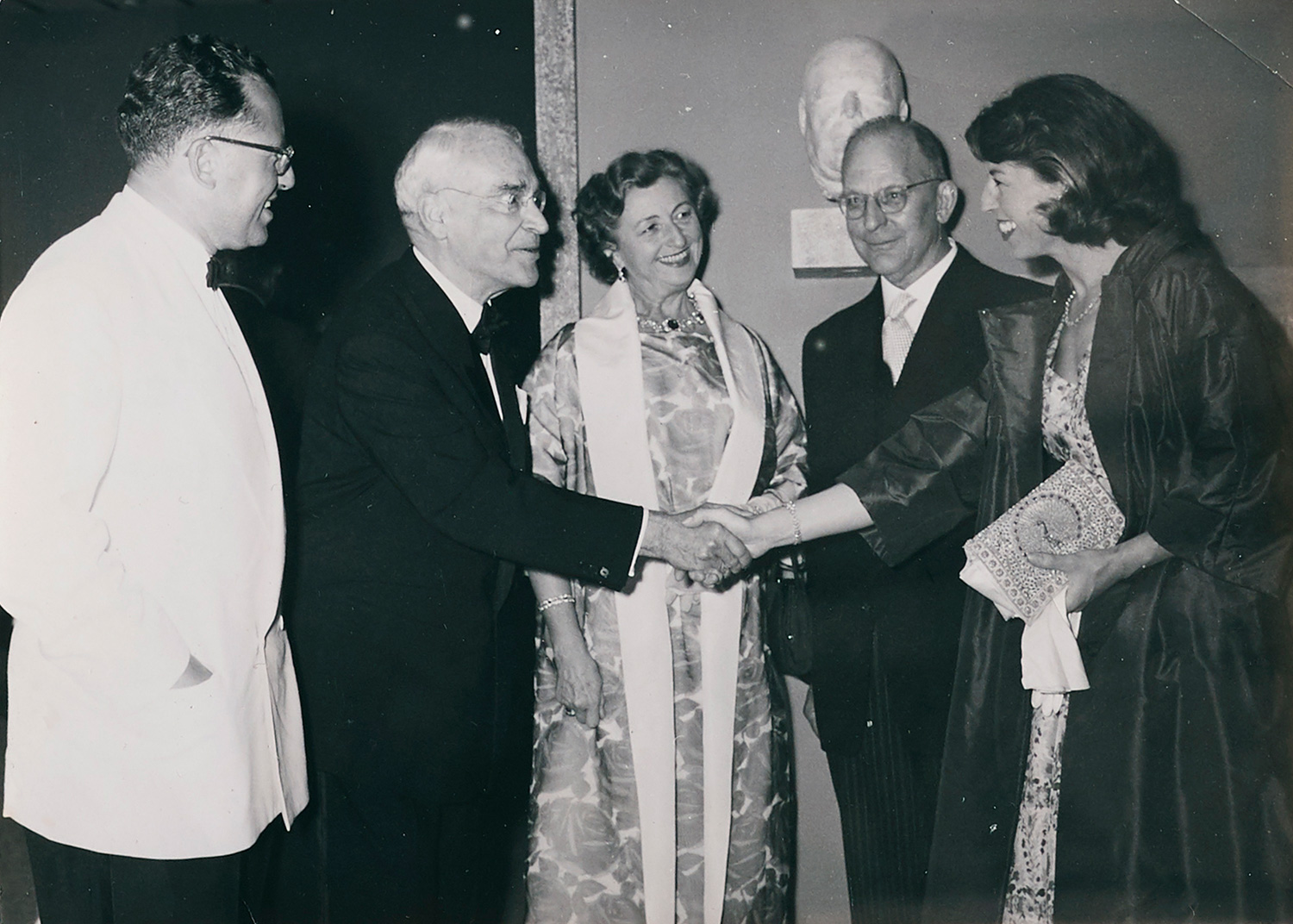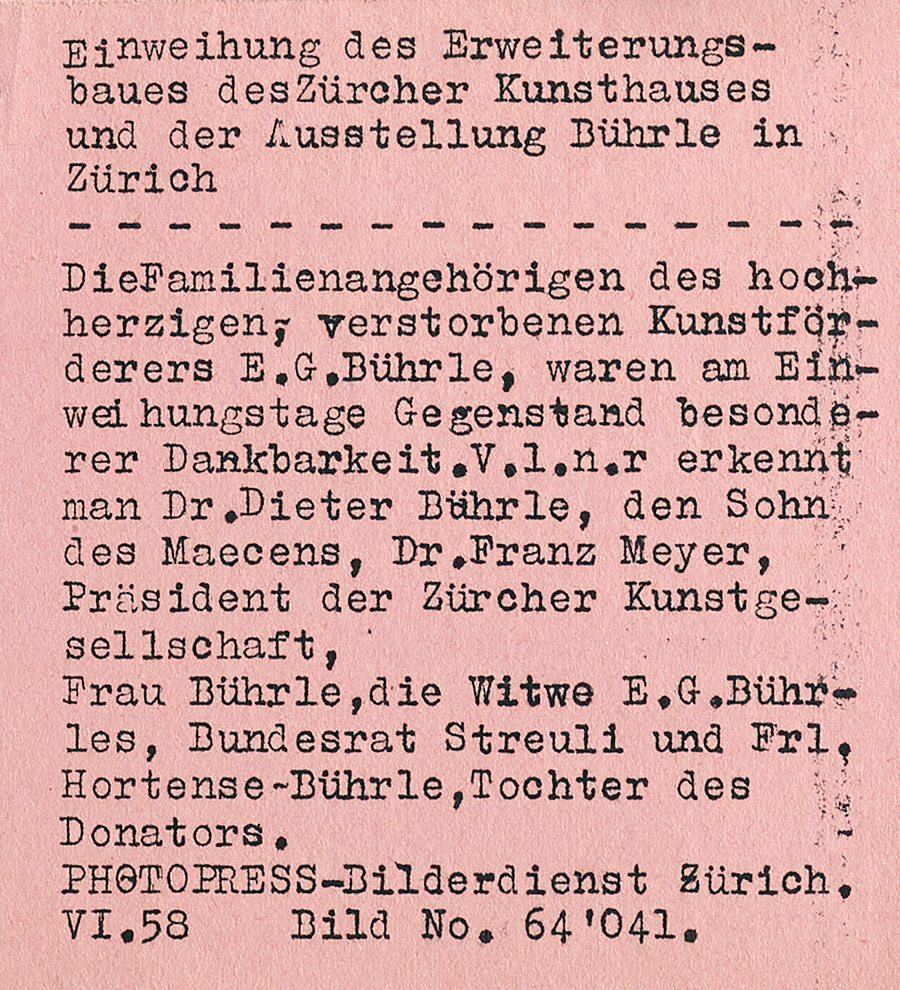The Bührle Collection
One of the great modern art collections • 1936-1959
1936-1950: The beginnings
Emil Bührle began purchasing works of art in November 1936 to furnish the large house into which he and his family moved in autumn of the following year. Although his first choice were French Impressionist and Post-Impressionist painters from the beginning, Emil Bührle remained dependent upon the Swiss art market for a long time. Most of his purchases were made from the Zurich gallery of Toni Aktuaryus. More expensive pieces were acquired from Siegfried Rosengart in Lucerne, who had taken over the Swiss branch of the Thannhauser Gallery.
In June 1939 Bührle was one of the buyers at the auction of so-called “degenerate art” from German museums at Galerie Fischer in Lucerne where he bid unsuccessfully for a Self-Portrait by Van Gogh. In 1942, Bührle accepted an offer from Theodor Fischer to share ownership in the Coray Collection of Old Master paintings which Bührle had acquired to sell at a profit. In turn, Fischer sold works by French Impressionists to Bührle. During the Second World War Emil Bührle purchased around 100 artworks mostly from Swiss art dealers. From 1940 onwards, he increasingly sought advice from Fritz Nathan, a dealer based in St. Gall.
At the end of the Second World War, 77 artworks were identified with various collectors and dealers in Switzerland which had been looted by the Germans in France. Emil Bührle held 13 of these, most of them purchased from the Fischer Gallery. In 1948, the Chamber for looted property of the Swiss Federal Supreme Court in Lausanne ruled the restitution of the artworks. Subsequently, Emil Bührle purchased 9 of the returned paintings a second time, 4 of them from the French dealer Paul Rosenberg, who had moved his gallery from Paris to New York during the war.
Immediately after the war ended, the number of pictures acquired temporarily decreased, but Emil Bührle nevertheless purchased works that testify to his ever-growing ambitions. In 1948 he purchased Paul Cézanne’s The Boy in the Red Waistcoat, one of the best-known pictures in the collection, followed in 1949 by Auguste Renoir’s Little Irene. Bührle was less fortunate with his purchase of what claimed to be a second version of the Self-Portrait Dedicated to Paul Gauguin by Van Gogh which had eluded him in Lucerne in 1939. It was soon found to be a copy that had been reworked with fraudulent intent.
From the start of 1948, Bührle engaged Walter Drack to act as his private secretary and collection curator at his residence. Drack was charged with systematically compiling provenance and bibliographical information on the works purchased. His task was made difficult by the fact that the dealers selling the works were often reluctant to disclose their sources. In the same period, Bührle intensified his business relation with Paul Rosenberg who had recognized him as an interesting potential client.
1951-1956: The peak
From 1951 onwards, the number of works acquired increased markedly, with around 100 pictures and sculptures now routinely being added to the collection each year. Many of Emil Bührle’s purchases were made abroad, when visiting galleries while on business trips. Alongside Paul Rosenberg, the close circle of leading dealers from whom Bührle purchased included Germain Seligmann in New York, Georges Wildenstein in New York and Paris, Frank K. Lloyd of Marlborough Fine Art Ltd. in London, Max Kaganovitch in Paris as well as Walter Feilchenfeldt and Fritz Nathan in Zurich. Bührle enjoyed a particularly trusting relationship with Arthur Kauffmann, whom he had met during the First World War and who was now living in London.
In June 1954 Emil Bührle presented a slide show at the University of Zurich entitled On the Genesis of My Collection. In it, he described his own historical position within the reception of French Impressionism and explained the art-historical principles that guided him in the selection of earlier art. The text is the only surviving statement by Bührle on his collection and reveals an acute awareness of the aims he was pursuing. At that time, the American photo-journalist Dmitri Kessel took the picture of Emil Bührle surrounded by his paintings in view of an article in «Life» magazine which, however, didn’t materialize.
1957-1959: The first exhibitions
When he died in 1956, Emil Bührle left no instructions concerning what was to be done with the works in his collection. In June 1958, the exhibition gallery with which Bührle had endowed the Kunsthaus Zürich was inaugurated with an exhibition including a large part of his collection. The exhibition catalogue contained 321 numbers and was published with exceptionally complete provenance data and bibliographical details. At the time, the collection still comprised 563 of the 598 works that Emil Bührle left at the time of his death. From the 633 works of art he had acquired throughout his life, 35 were swapped for other works or given away during his lifetime, as Bührle was not in the habit of selling pictures once he had acquired them, and 35 more were disposed of between 1957 and 1959. Small but also very representative groups of works were exhibited after the Zurich exhibition in 1958 and 1959 at the Haus der Kunst in Munich and Schloss Charlottenburg in Berlin.
